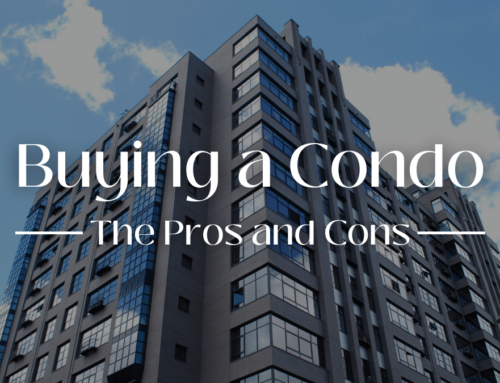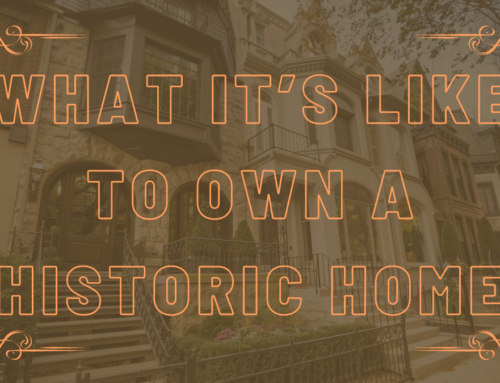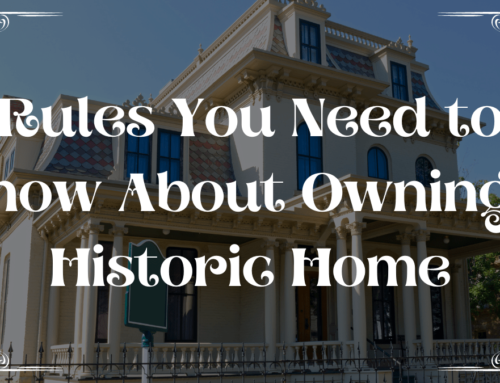Everything You Need To Know About Savannah’s Historic Home’s
What do Savannah, Charleston, and New Orleans all have in common? Each is in the South of course; and each is also an epicenter of culture and commerce. But they have something else in common that many people might not know: they are all designated as official United States historic districts.
Here in the U.S. a historic district is a group of buildings or sites that have been recognized by a government as historically, culturally, or architecturally important. This designation enacts various regulations that are intended to preserve the unique character of these districts. The idea is that whatever changes make their way into a historic district, they must complement what is already there.
Homes for sale in Savannah’s historic district are the most beautiful and popular in the United States, attracting visitors and flattering residents alike. But living in a historic home in Savannah is not quite the same as living in an area without a historical designation. So let’s look at a few of the most important things you need to know if you are thinking about buying a historic home.
Architecture And Design
Prospective homebuyers are often surprised to learn how detailed the rules and regulations governing historic homes in Savannah are. The Metropolitan Planning Commission (MPC), which is partly responsible for formulating these rules and regulations, governs everything from the kinds of windows homeowners may install to the colors and proportions of their home’s exterior façade.
For example, the MPC sets out guidelines that regulate the ‘rhythm’ of buildings on a residential street. So if your home is one in a row of houses with similarly designed porches, front facades or windows, then these guidelines stipulate that any renovations you make must be complementary. This includes the kinds of materials and the range of colors you can use. So eccentric architectural flairs (unless you live in a historic district marked by them!) likely won’t be permitted in a historic district.
These regulations don’t govern only the aesthetics of a historic home, however. If you’d like to make renovations to your historic home, like add an additional floor or change the design, then the scale and architectural style and design must be in accordance with the stated regulations for the area. Given that the layout of some historic homes can be quite idiosyncratic, this is something to keep in mind. You might not have free reign over how your own home is laid out. Here are some historic home renovation finance options.
Of course, in some cases, you may petition a review board to have your proposed modifications approved. But there is no guarantee your proposal will be accepted, and living in a historic district means having to accept these rulings.
But don’t get the wrong idea. Many homebuyers would love to live in a historic home in Savannah because the rules and regulations help preserve the natural beauty of its area. In this way of looking at it, living in a historic home is a privilege that ensures your neighborhood will remain beautiful and vibrant.

Tax Credits
You might be thinking that owning a historic home in Savannah is bound to be expensive. Maintaining a home in accordance with the rules and regulations of a historic designation can’t come cheap, right?
But actually, this isn’t necessarily the case. The state of Georgia offers homeowners in designated historic districts a Historic Rehabilitation Tax Credit (HRTC). Introduced in 1976, this is designed to help homeowners bear the costs of maintaining their heritage designated homes.
To qualify, the historic structure (both private and public buildings are eligible for this credit) must be within a national historic district, be on the National Register of Historic Places, be listed on the Georgia Register, and also be certified by the Georgia Department of Natural Resources. The tax credit is for a maximum of 25% of the eligible expenditures, and for historic homes in lower-income areas an additional 5% can be claimed—to a maximum of $100,000 over a 120 month period.
The HRTC is not the only program designed to help homeowners maintain their heritage properties. The state of Georgia also offers a preferential property tax program and a federal historic tax credit for rehabilitating heritage properties as well.
The preferential property works by freezing property tax assessments of heritage properties for just over eight years. This allows homeowners to put the savings earned from a fixed property tax rate towards renovations for their heritage properties. The federal historic tax credit also gives a hand by offering a 20% credit for eligible expenses. But it’s worth noting that it’s applicable only for properties that do not generate an income. So businesses are not eligible for this program.
Overall, the package of incentives for living in a historic home in Savannah makes it an enticing financial investment for many homeowners. Rather than shouldering a big financial burden by yourself, local, state and federal government programs are there to give you a helping hand.
A Great Choice
Like all home ownership, living in a historic home in Savannah comes with its share of responsibilities. But the advantages are hard to deny. And when you factor in the government incentives for renovating and updating your historic home, many find that this is a great way to own a little slice of American history. For more information about owning or buying a historic home in Savannah, contact The Heather Murphy Real Estate Group today!









